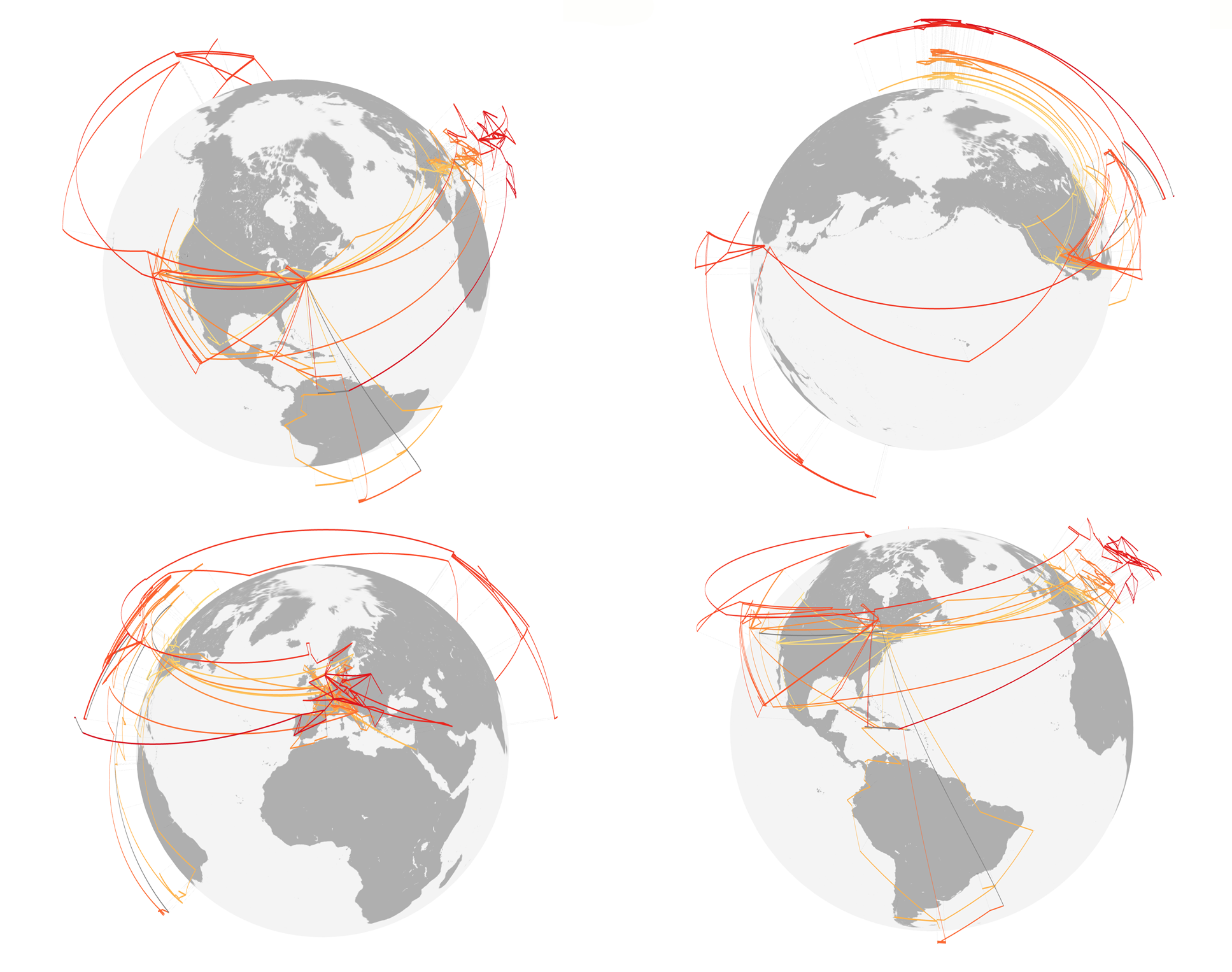Dunham’s Data is funded by the Arts and Humanities Research Council (AHRC AH/R012989/1, 2018-2022), under the direction of Kate Elswit (PI, University of London, Royal Central School of Speech and Drama) and Harmony Bench (CI, The Ohio State University). Dunham’s Data was recognized with the 2021 ATHE-ASTR Award for Excellence in Digital Theatre and Performance Scholarship.
 The core project team consists of Harmony Bench, Kate Elswit, Antonio Jimenez-Mavillard, Tia-Monique Uzor, and previously Takiyah Nur Amin. They are joined by UK industry partners One Dance UK’s Dance of the African Diaspora and the Victoria & Albert Museum, as well as international knowledge exchange partnerships with digital projects at Ohio State (US), Ludwig Maximilians Universität Munich (Germany), and the University of New South Wales (Australia).
The core project team consists of Harmony Bench, Kate Elswit, Antonio Jimenez-Mavillard, Tia-Monique Uzor, and previously Takiyah Nur Amin. They are joined by UK industry partners One Dance UK’s Dance of the African Diaspora and the Victoria & Albert Museum, as well as international knowledge exchange partnerships with digital projects at Ohio State (US), Ludwig Maximilians Universität Munich (Germany), and the University of New South Wales (Australia).
Through this project, we explore the kinds of questions and problems that make the analysis and visualization of data meaningful for dance history. We do so through the case study of choreographer Katherine Dunham, manually cataloguing a daily itinerary of Dunham’s touring and travel from the 1930s-60s, the dancers, drummers, and singers in her employ during that time, and the repertory they performed. These curated datasets provide new means to understand the relationships between thousands of locations, and hundreds of performers and pieces across the decades of Dunham's career, and ultimately elaborate how movement moves.
While digital methods have altered the landscape of most humanities and arts disciplines, the field of dance studies has yet to fully identify how it can benefit from these analytic approaches. Through the specific line of research regarding Dunham, the project addresses the original problems and questions of dance history that can be advanced through an innovative critical mixed methods approach that includes geographical mapping and network analysis. Dunham is an exemplary figure for analysing the ways dance moves across times, places, and performers. She worked across six continents in many contexts, and also spent over one third of her life on tour, and she was also an extraordinary self-archivist.
To find out more about this project, go to www.dunhamsdata.org.
Associated Publications
For interactive visualizations, datasets, project blog, and more, see the Dunham’s Data Portfolio: https://dunhamsdata.org/portfolio/visualizations
Where more than one author is listed, publications are equally co-authored and the name order is alphabetical.
- Bench, Harmony and Kate Elswit. “The Body is Not (Only) a Metaphor: Rethinking Embodiment in DH” (forthcoming 2023)
- Bench, Harmony and Kate Elswit. “‘So… Will You Be Looking at Dance?’: Data-led Dance History and the Edges of Movement Computing.” Movement Computing. (June 2022). DOI: https://doi.org/10.1145/3537972.3537986
- Bench, Harmony and Kate Elswit. “Visceral Data for Dance Histories: Katherine Dunham’s People, Places, and Pieces.” TDR 66.1 (March 2022): 37-61. DOI: https://www.doi.org/10.1017/S1054204321000708
- Bench, Harmony, Kate Elswit, and Antonio Jimenez-Mavillard. “Connectivity vs. Canonicity: Data Science and Dance Studies in Historical Dialogue.” Graphs and Networks in the Humanities (Feb. 2022) https://graphentechnologien.hypotheses.org/files/2022/01/Connectivity_v…
- Bench, Harmony and Kate Elswit. “Dance History and Digital Humanities Meet at the Archives: An Interim Project Report on Dunham’s Data.” Dance Research 38.2 (Nov. 2020): 289 - 295. DOI: https://www.doi.org/10.3366/drs.2020.0314
- Bench, Harmony and Kate Elswit. “Katherine Dunham's Global Method and the Embodied Politics of Dance's Everyday.” Theatre Survey 61.3 (Sept. 2020): 305 - 330. DOI: https://doi.org/10.1017/S0040557420000253
- Bench, Harmony and Kate Elswit. “Dance Touring and Embodied Data: Some Approaches to Katherine Dunham’s Movement on the Move.” Current Research in Digital History 2 (Dec. 2019). DOI: https://doi.org/10.31835/crdh.2019.12
Sponsors



Partners
- Victoria and Albert Museum
- One Dance UK, Dance of the African Diaspora
- Ludwig Maximilians Universität Munich, Global Theatre History
- University of New South Wales
- AusStage
Consultants and Website Development
- Alison Furlong, website development and portfolio design, ASC Technology, The Ohio State University
- Michael Hardesty, Director of Application Development, ASC Technology, The Ohio State University
- Dustin Perzanowski, Senior Software Developer, ASC Technology, The Ohio State University
- Abhijit Varde, website design and development, ASC Technology, The Ohio State University
Advisory Board
- Takiyah Nur-Amin (College of Wooster)
- Christopher Balme (Ludwig Maximilians Universität Munich)
- Jonathan Bollen (University of New South Wales)
- Meghan Cope (University of Vermont)
- Saroya Corbett (Institute for Dunham Technique Certification)
- Sara Johnson (University of California San Diego)
- Nike Jonah (Afrovibes UK)
- Susan Manning (Northwestern University)
- Mercy Nabirye (One Dance UK, Dance of the African Diaspora)
- Harvey Miller (The Ohio State University)
- Libby Smigel (The Library of Congress)
- Juan-Luis Suárez (University of Western Ontario)